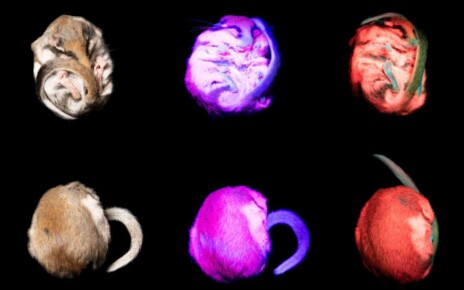[ad_1]
The barn owl’s tail has a surprisingly important role to play in making the bird more aerodynamic
Physics
9 February 2022
A barn owl in flight Javier Fernandez Sanchez/Getty Images
The barn owl’s tail plays an unexpected role in flight by making the bird more aerodynamic, which may have implications for drone design.
In aeronautical engineering, anything that provides lift – essentially whatever helps an object stay airborne – usually comes at a cost of drag. This is because a thing that offers lift creates a barrier that requires the flying object to use more energy to keep moving forward through the air, says James Usherwood at the Royal Veterinary College in Hatfield, UK.
Because the barn owl’s tail provides lift, while also helping to control stability and direction, Usherwood and his colleagues assumed it would also create drag. But their lab experiments found this wasn’t always the case when considering the bird as a whole.
The researchers captured high-speed video of a barn owl (Tyto alba) gliding through an experimental flight corridor. They then used the footage to create a high-fidelity computational fluid dynamics (CFD) model of a barn owl in flight, before isolating the effects of the tail alone on flight performance. This involved testing 42 different tail positions.
They found that the barn owl can use its tail to gain lift and support the bird’s weight, while resulting in less overall drag if it is travelling at low gliding speeds. This was confirmed in the real world by again recording the owl gliding through the flight corridor, but this time filling the corridor with more than 20,000 soap bubbles to record the owl’s influence on air flow.
“We were standing in the lab and we went, ‘hmm, textbooks don’t say that should be happening behind the tail’, but we saw it there,” says Usherwood.
“You didn’t particularly need the CFD to get the [finding],” he says. “You go: ‘Oh, my goodness, the bubbles are going the wrong way!’”
The animal probably achieves this feat by using the tail to affect airflow over the wings themselves, says Usherwood. At an average slow gliding speed of 28 kilometres per hour, optimal lift and minimal drag occur when the tail feathers are fanned out, and a line following the outer edge of each side of this fan forms an 18-degree angle with the bird’s midline, while the tail tilts down 23 degrees from horizontal. This configuration allows the owl to “compromise” between the overall drag on its body and wings and the drag created by the added surface area of the feathered tail, says Usherwood.
“But we’re not saying that’s why they have tails,” he says, adding that the tails still provide the other previously recognised advantages, including stability and directional control.
This biological design runs counter to common industrial aeronautical designs for smaller aircraft, which often aim to reduce drag by avoiding the use of tails altogether, says Usherwood. Whereas large, fast-flying aircraft might not benefit from reduced drag through tail posture, smaller craft, including drones that fly at slower speeds and hover, might experience less drag if they followed the owl’s model.
“You’re always fighting this trade-off with drag, and how much weight you can carry, and how long you can stay up there,” says Usherwood. “So anything you could do to reduce the drag for a given lift is a good trick.”
Even so, Usherwood says engineers would have understood this eventually. “I think engineers are quite clever already,” he says. “All the building blocks are there. We just haven’t seen it done on aircraft yet.”
Journal reference: Journal of the Royal Society Interface, DOI: 10.1098/rsif.2021.0710
Join us for a mind-blowing festival of ideas and experiences. New Scientist Live is going hybrid, with a live in-person event in Manchester, UK, that you can also enjoy from the comfort of your own home, from 12 to 14 March 2022. Find out more.
More on these topics:
[ad_2]
Source link




